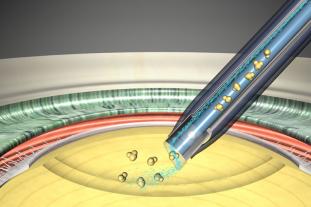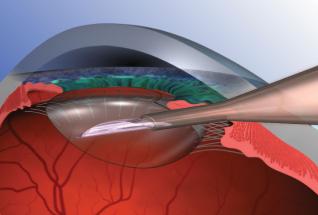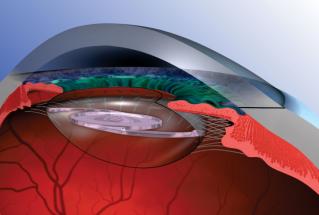Cataract surgery is a procedure where a surgeon removes the patient’s clouded natural lens and replaces it with an artificial intraocular lens (IOL). The entire procedure is done on an outpatient basis and typically lasts less than 15-20 minutes. Patients should experience little to no pain and return to their normal activities the following day.
What it isn’t
Cataract surgery is not LASIK, a type of laser surgery in which the cornea is reshaped to improve vision. Cataract surgery actually replaces the lens of the eye with a new, artificial lens.
Phacoemulsification or Small incision cataract surgery
Dr. Epitropoulos makes a small incision at or near your cornea and inserts an instrument about the size of a pen tip to remove the cloudy lens. Once the natural lens is removed, the IOL is inserted through the same incision and set into its permanent position.

Cataract surgery is considered one of the safest and most effective medical procedures. Millions of cataract surgeries are performed each year in the United States. The most advanced and most commonly used technique is phacoemulsification or small incision cataract surgery. It requires a very small incision on the side of the cornea (an eighth of an inch or smaller). Stitches are rarely needed, and the eye heals rapidly. More than 97 percent of phacoemulsification patients experience no complications.


Delaying surgery
You may be able to take some simple steps to delay surgery, depending on the severity of your vision loss. Basic, preliminary steps include getting a new pair of prescription eyeglasses and increasing your home lighting. But before deciding to delay surgery, you'll need to consult your eye care professional and ask yourself how much your cataract is affecting your safety or quality of life.
Call 800.964.9969
If you are interested in seeing your best without glasses, please contact Alice Epitropoulos, M.D., today. We will discuss the benefits, risks and costs. As always, Dr Epitropoulos strives to provide the latest proven solutions to protect and restore vision for you and your loved ones.






